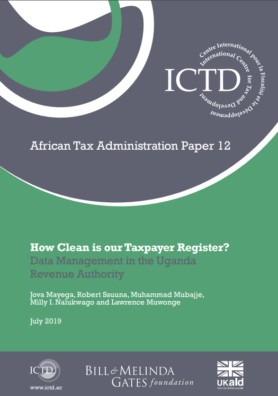African Tax Administration Paper 12
Revenue administrations collect large amounts of data on individuals and firms in the course of their work. Increasingly, this data is digitised. The use of digital technologies has the potential to greatly improve the efficiency and effectiveness of tax administration, by: Reducing the cost of routine operations for both taxpayer and tax collector; Reducing the need for face-to-face interactions between taxpayers and tax collectors,thereby shrinking opportunities and incentives for collusion and corruption; Making it possible to select taxpayers for audit easily and cheaply on the basis of risk analysis; Opening up new opportunities to undertake statistical analysis to assess the effectiveness of existing operational procedures, and to design improvements. The Uganda Revenue Authority (URA) uses automated digital processes to a higher degree than most tax administrations in Africa. These processes nevertheless suffer from a range of problems. We report here on an assessment that the URA undertook of one important aspect of its own data management practices: the management and accuracy of one of its most important data bases, the taxpayer register. We discovered considerable problems of inaccurate data and, primarily as a result of the activities of tax agents, a high level of duplication of the same telephone numbers and email addresses, and possession of multiple taxpayer identification numbers. These inaccuracies reflect a number of factors, including inadequate design of registration forms and procedures, and the low priority given to verification and the accuracy of the register.
